Up a winding and sometimes hair-raisingly narrow road from Luino, the twice-a-week bus takes us to the village of Curiglia. The bus driver beeps before especially blind corners, but in several places it is a matter of inching past the oncoming vehicle, or in the old towns, of one backing up until room is found to pass.
We are met by our hostess for the week, Nicoletta, who saves us a walk of several kilometres by a lift to the car parking place, from where we walk several more kilometres to the ancient tiny village of Piero, seen here from the path above it.
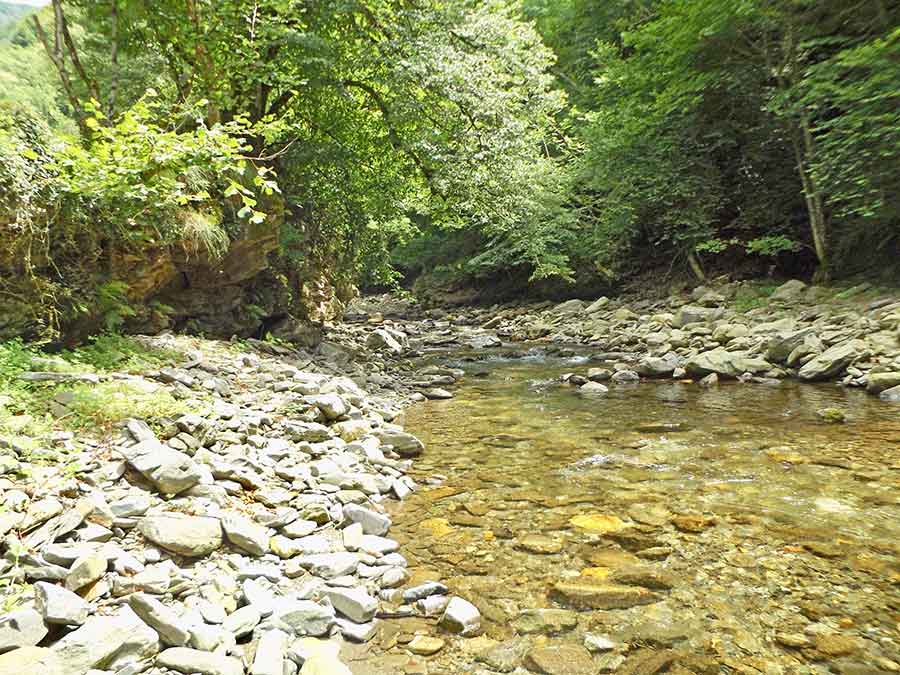
We clatter over the Ponte di Piero bridge across the Giona river, as clear and fast flowing as one would expect of a mountain stream.
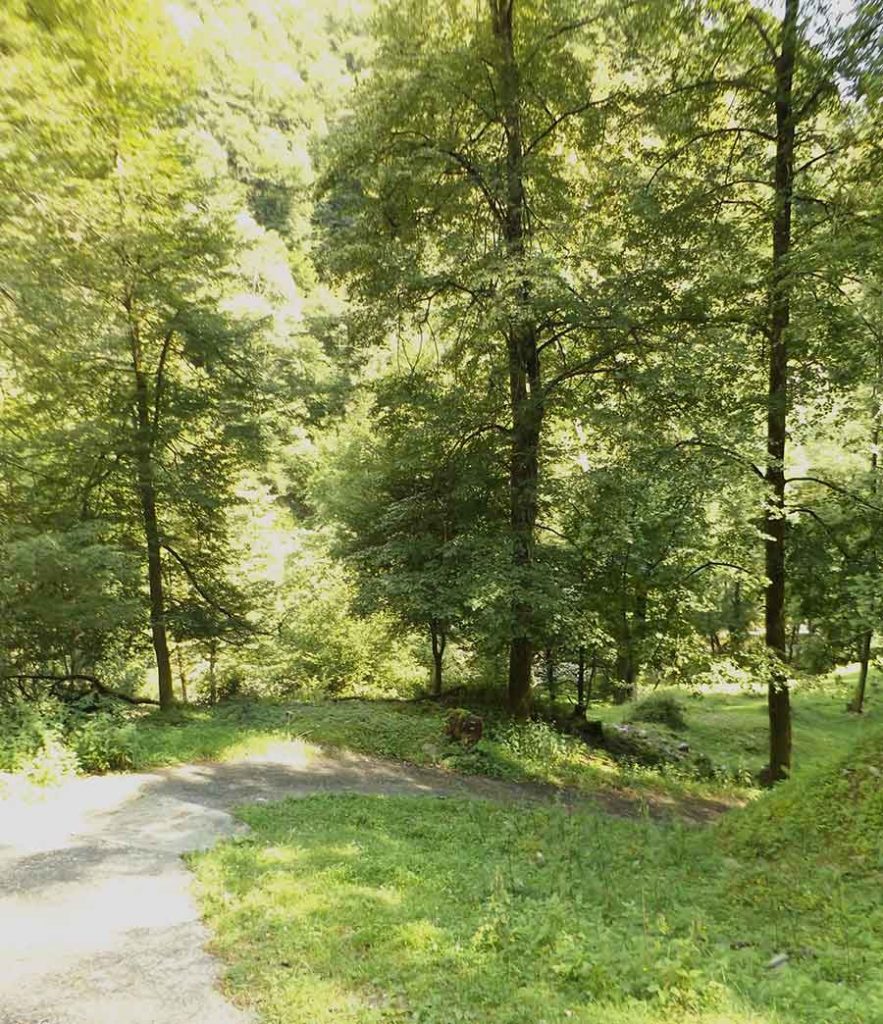
The path climbs through impossibly green creekside clearings, where several dairy cows lumber, their cowbells clunking. Beside a smaller fast downhill creek, the path becomes steeper and stonier… and slower!
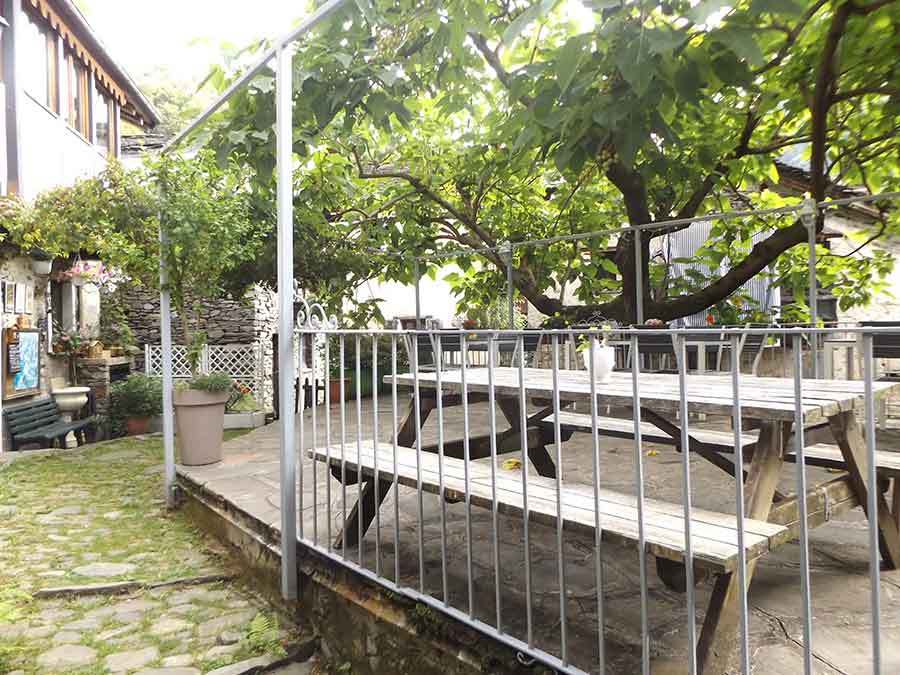
And we are here at Baito Kedo, the heart of Piero and our home for a week.
Part of the Valley of Veddasca’s agritourism network, it offers walkers a place to rest in charming shady surroundings, drink coffee, beer or wine, eat delicious local food, or stay in the Hut, as we will.

Nicoletta is a really good cook, able to whisk up tasty dishes even for vegetarian me, or a fabulous layered torta from their own mulberries, and a heavenly local yoghurt with berries and ginger that could become an addiction. In the village, Alessandro makes such great goats’ cheese that we buy three sorts.
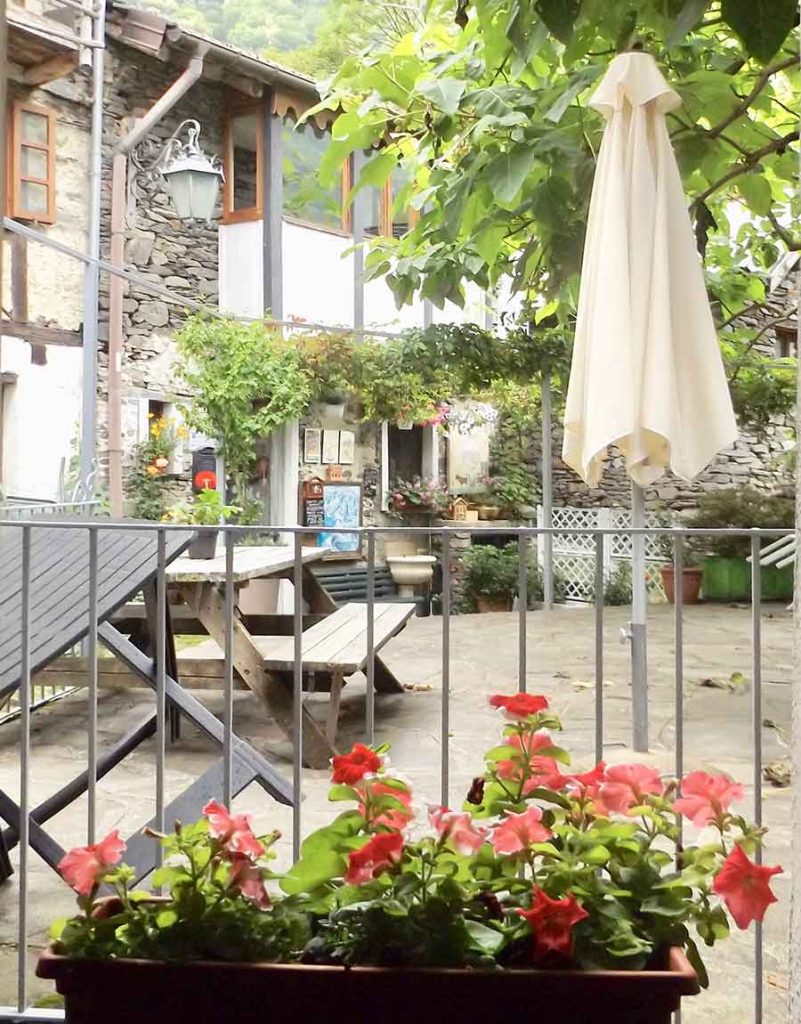
In our Hut, downstairs the kitchen looks on to the restaurant terrace.
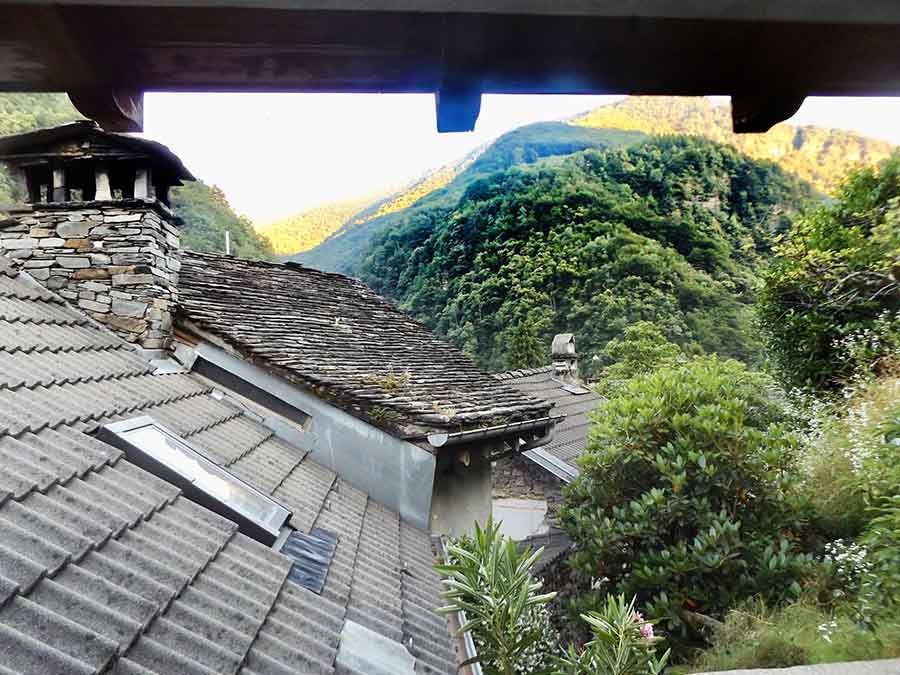
Upstairs, the view from our large bedroorn window takes you past the higgledy-piggledy roofs to the mountains. I am entranced by the vertical stones used to support the chimney’s roof. I will soon learn why most things are made from stones.
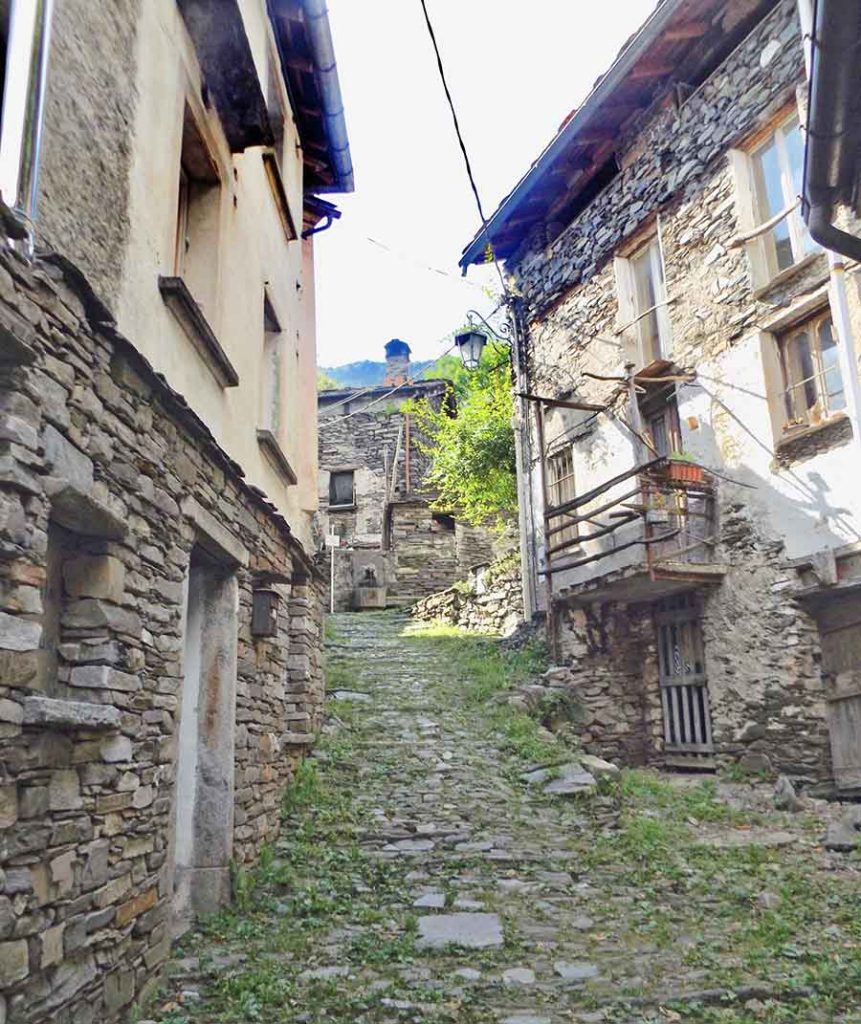
Like most alpine villages, the stone houses are small, lean on each other and cling to the steep slope.
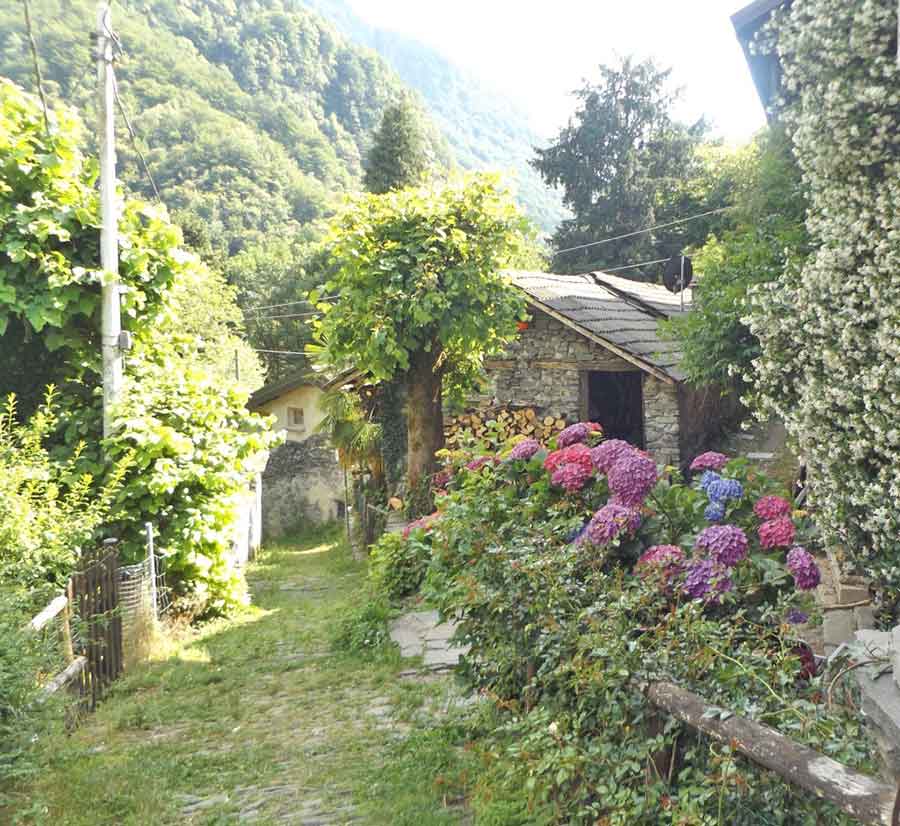
Chinese jasmine spills over many walls, while hydrangeas and oleanders show how much they love this summer. Winters are rarely cold enough here anymore for snow, we are told. Climate change? But you would see the snow covered mountains nearby.
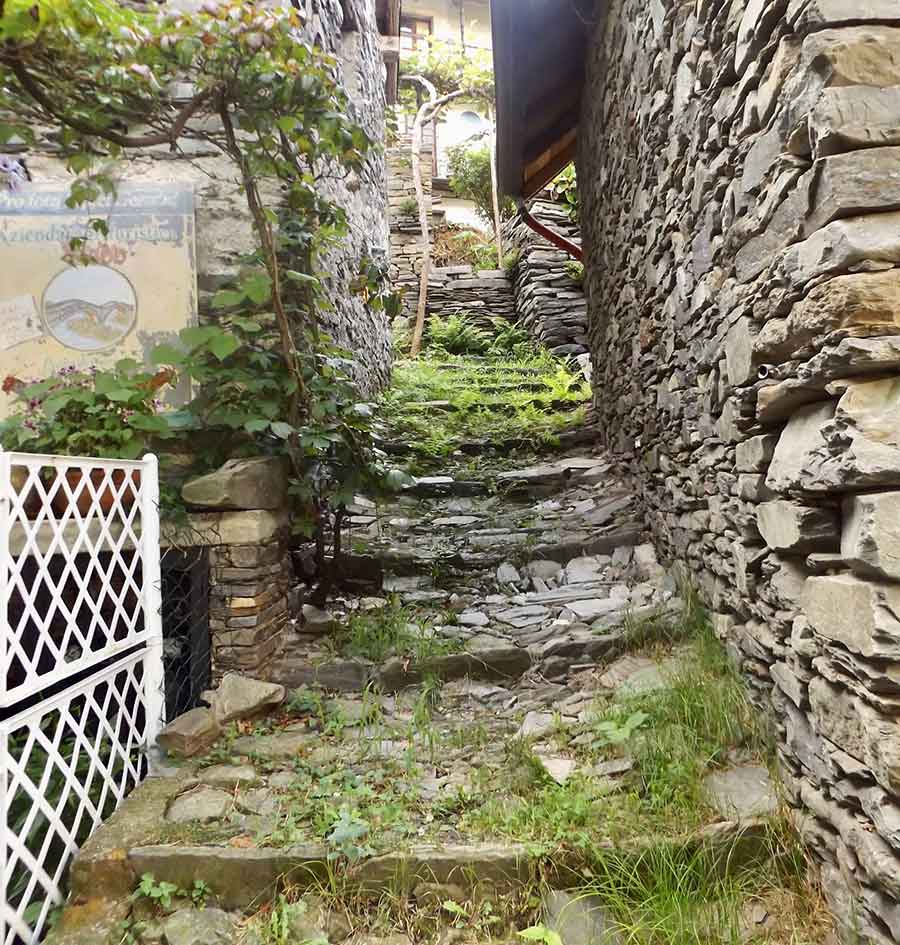
The ‘road’ through Piero is for feet, not cars, and stones are used to help the climb and slow water flow. The stones here are amazingly flat, perfect for houses and walls and paths. Some roofs are made from slate stones, quarried elsewhere and often carried by the women in ancient times, Nicoletta tells us.

Of course there is a church, small but well cared for, although the priest can only come twice a year.

Water runs freely… and free … and is cool and clean.
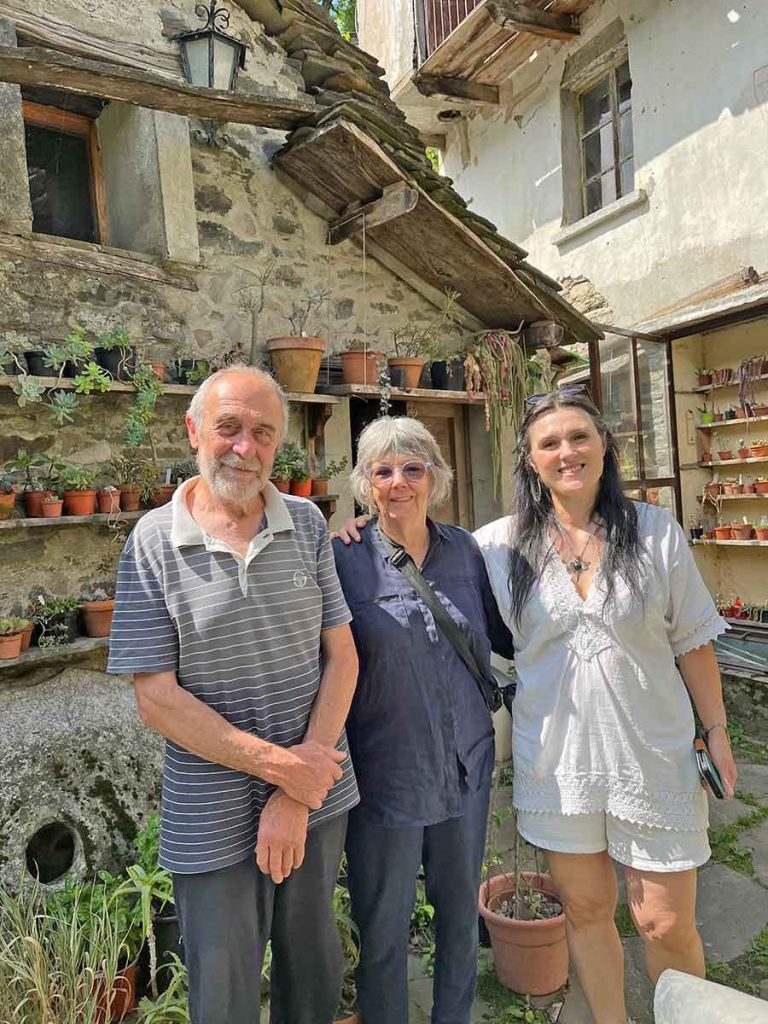
So why and how am I here in this fairly isolated place?
My friends Paola Cassoni and Ian Hoch, Bimblebox carers, lived here about 40 years ago, when it was going through what might be called a ‘hippy’ stage. When I said I wanted to visit less cities and palaces, and more nature, they suggested Piero.
Some of their old friends still live here, like Ambrogio (above in the photo taken by Trish) herbalist and native plant guru, and the generous Gigi, who could speak English, and gave us his time … and from his garden lemon balm and rose petals to make tea.
Ian Hoch credits Ambrogio with being the reason why he is so passionate about preserving Nature and BImblebox, and about teaching others to do the same.
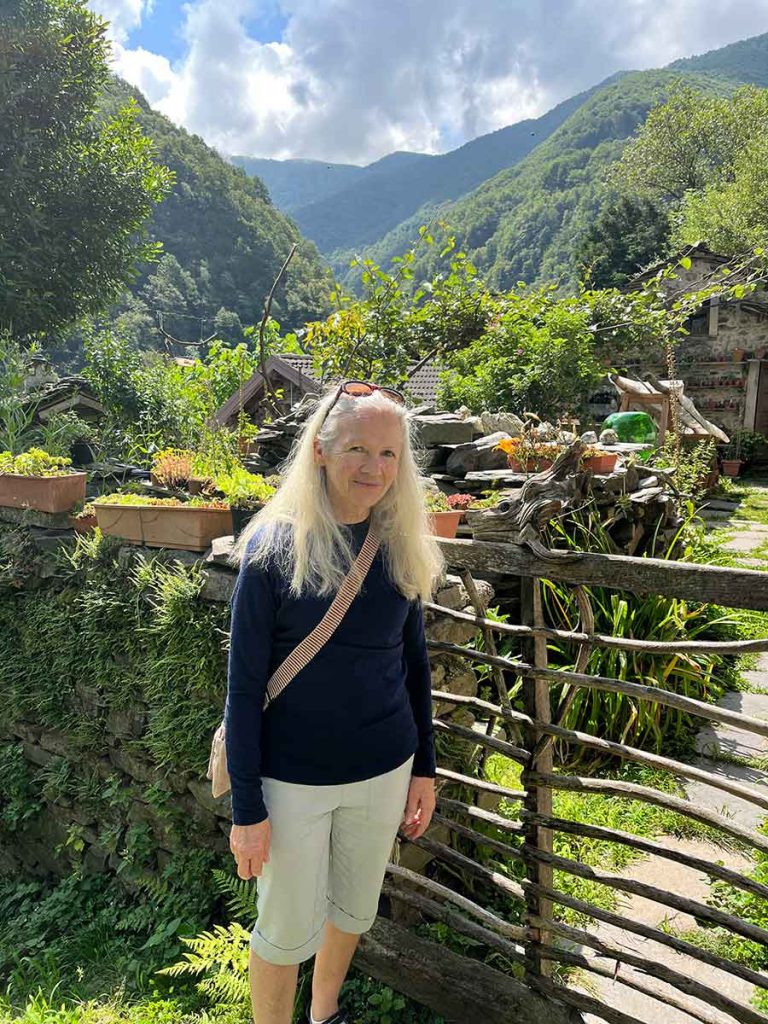
Ambrogio also makes magical gates from nature’s sculptures, timber found in the forest. Trish was admiring this one, the entry to his own garden.

Indeed it is magical, Monica. Cast a spell on me…
Sharyn, pure magic!!!!
Thanks for the whatevers Arwen!!
My love hearts turned into question marks! 🙁
???? = love heart love heart xxoox
Thank you for taking us on your adventures Sharyn! ????
Yes, Janet and Karen,I did want to stay, but Paola says the winter would settle that. Every mountain village had free running water like that, some more decoratively offered than others.
This place and people would be hard to leave. Love it!
More gorgeous photos and descriptions…thanks, Sharyn. I think I’d be considering staying forever!
The stone water fountain particularly delights me…. I can almost taste the refreshing water. Perhaps we could engineer some water to flow off North Brother to some fountains like this in the local villages?
Cheers, Karen